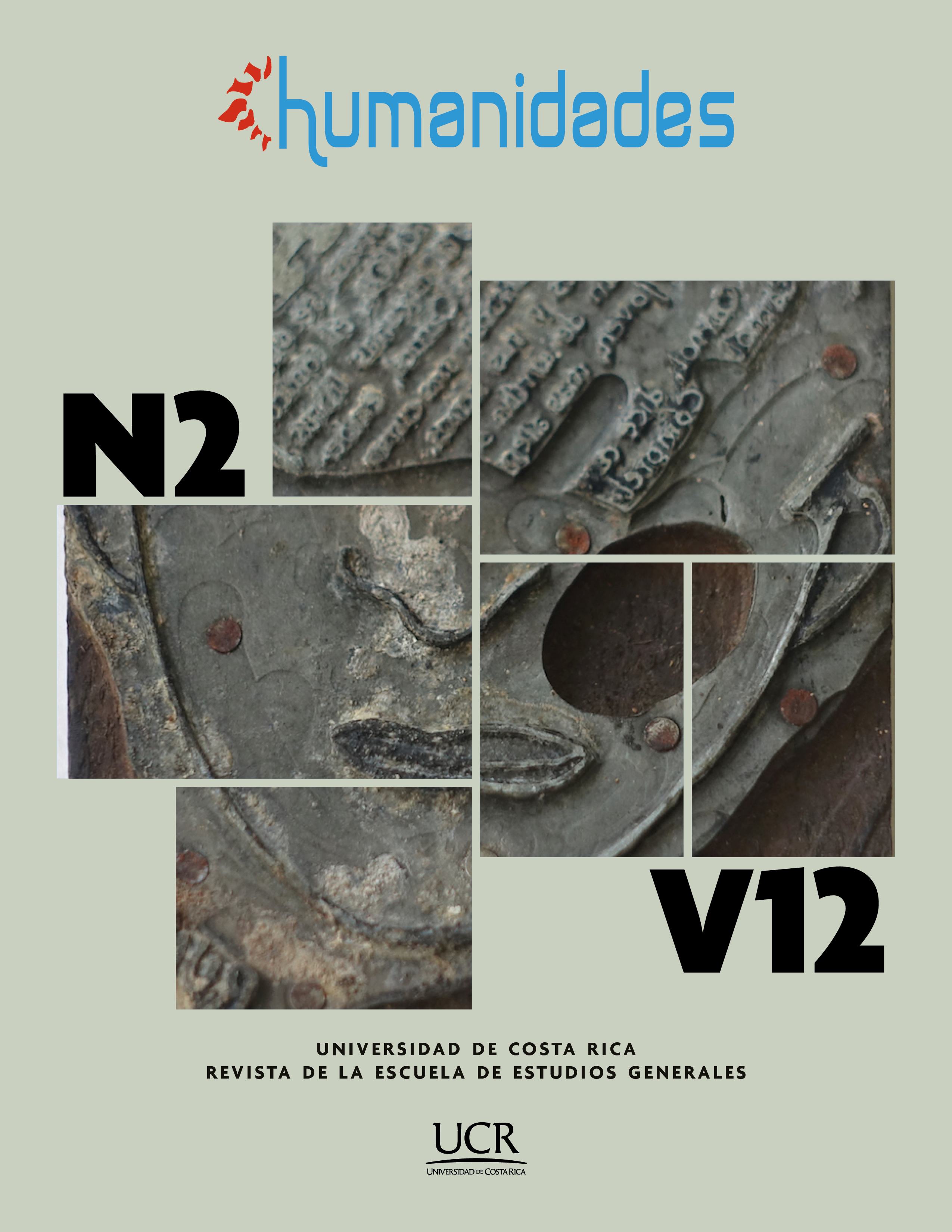Abstract
The present paper provides creative insight into Jacques Lacan’s theoretical understanding of sexual difference from an unconventional perspective, in the attempt to develop a critical approach as well as a concrete alternative to the Lacanian declaration the woman does not exist. To this end, this paper revisits the notion of unconscious desire, methodologically inspired by Gilles Deleuze and Felix Guattari and Luce Irigaray. In this line, it will also redefine the power of the letter as trace’s enjoyment, thus subverting the potential of Chinese and Japanese calligraphy analyzed by Lacan. With this aim, certain cases studies will be of use, such as the Taoist painter Shitao, the semiographies painted by André Masson, and The Origin of the World, the painting by Gustave Courbet which was owned by Lacan himself. The crucial aspect is ultimately to locate lack as the essential product of castration within the symbolic signifier -also knowned as Phallus and the Name of the Father- which rules the Other’s production of subjectivity, excluding women from language and representation.References
Abad, J. C. (2004). Prólogo. En W. Wei (A.), Poemas del río Wang (pp. 11-16). Trotta.
Alemán, J. y Larriera, S. (1998). Lacan: Heidegger. El psicoanálisis en la tarea del pensar. Miguel Gómez Ediciones.
Aubert, J., Cheng, F. y Milner, J. C. (2001). Lacan, el escrito, la imagen. Siglo XXI.
Barthes, R. (1986). Semiografía de André Masson. En Lo obvio y lo obtuso. Imágenes, gestos, voces (pp. 157–160). Paidós.
Barthes, R. (2004). S/Z. Siglo XXI.
Barthes, R. (2005). El grano de la voz. Entrevistas 1962-1980. Siglo XXI.
Barthes, R. (2007). El Imperio de los signos. Seix Barral.
Barzilai, S. (1999). Lacan and the Matter of Origins. Stanford University Press.
Blondelot, X. & Sauret, M. J. (2015). Japanese and Lacanian Ways of Thinking: An Invitation to Dialogue. Japan Review, (28), 173–189. http://www.jstor.org/stable/43684120
Brubaker, D. A. (2011). Metaphysics in Chinese Art. En M. B. Wiseman & L. Yuedi (Eds.), Subversive Strategies in Contemporary Chinese Art (pp. 191–212). Brill.
Carmine, R. (2012). La función de la escritura en Lacan. Escritura e Imagen, 8, 277–299.
Cheng, F. (1993). Vacío y plenitud. Siruela.
Cheng, F. (2007a). Cinco meditaciones sobre la belleza. Siruela.
Cheng, F. (2007b). La escritura poética china. Pre-Textos.
Cheng, F. (2017). Aliento-espíritu. Textos teóricos chinos sobre el arte pictórico. Pre-Textos.
Chiesa, L. (2007). Subjectivity and Otherness. A Philosophical Reading of Lacan. The MIT Press.
Coleman, E. J. (1978). Philosophy of Painting by Shih-T’ao: A Translation and Exposition of his Hua-P’u (Treatise on the Philosophy of Painting). De Gruyter Mouton.
Constantinidou, D. A. (2012). When Lacan Met Dali: Lacan’s “Paranoid” Reading of Saussure’s Theory of the Sign. Gramma: Journal of Theory & Criticism, 20, 237-256. https://doi.org/10.26262/gramma.v20i0.6304
Deleuze, G. y Guattari, F. (1985). El Anti-Edipo. Capitalismo y esquizofrenia. Paidós.
Dor, J. (2004). Introduction to the Reading of Lacan: The Unconscious Structured like a Language. Other Press.
Fadón, P. (2006). Breve historia de la pintura china. Comares.
Góngora, A. (2019). Del vacío la letra, de la letra el vacío: algunas consideraciones orientales. Lapso. Revista Anual de la Maestría en Teoría Psicoanalítica Lacaniana, (4), 32–42. http://matpsil.com/revista-lapso/portfolio-items/gongora-briones-del-vacio-la-letra-de-la-letra-el-vacio-algunas-consideraciones-orientales/
Homer, S. (2005). Jacques Lacan. Routledge.
Hook, D. (2006). Lacan, the Meaning of the Phallus and the “Sexed” Subject. En T. Shefer, F. Boonzaier & P. Kiguwa (Eds.), The Gender of Psychology (pp. 60–84). Juta Academic Publishing.
Irigaray, L. (1977). Ese sexo que no es uno. Saltés.
Irigaray, L. (2007). Espéculo de la otra mujer. Akal.
Jinli, H. (2011). The Second Sex and Contemporary Chinese Women’s Art. A Case Study on Chen Lingyang’s Work. En M. B. Wiseman & L. Yuedi (Eds.), Subversive Strategies in Contemporary Chinese Art (pp. 147–170). Brill.
Jullien, F. (1998). Elogio de lo insípido. A partir de la estética y del pensamiento chinos. Siruela.
Kerr, A. y Sokol, K. A. (2019). El otro Kioto. Alpha Decay.
Kit, E. (2019). Spiritual Rituals of Chinese Ink Painting: The Suggestions of Shitao. Contemporary Aesthetics, 17. https://contempaesthetics.org/2019/11/08/article-878/?hilite=shitao
Lacan, J. (2003). Escritos I y II. Siglo XXI.
Lacan, J. (2005). De los Nombres del Padre. Paidós.
Levine, S. Z. (2008). Lacan Reframed. Bloomsbury Publishing.
Leys, S. (2016). Breviario de saberes inútiles. Ensayos sobre sabiduría en China y literatura occidental. Acantilado.
Nakagawa, H. (2008). Introducción a la cultura japonesa. Melusina.
Nasio, J. D. (1998). Cinco lecciones sobre la teoría de Jacques Lacan. Gedisa.
Racionero, L. (2016). Textos de estética taoísta. Alianza.
Rivas, D. E. (2016). Lacan y la influencia China. En Memorias. VIII Congreso Internacional de Investigación y Práctica Profesional en Psicología. XXIII Jornadas de Investigación de la Facultad de Psicología. XII Encuentro de Investigadores en Psicología del MERCOSUR. “Subjetividad contemporánea: elección, inclusión, segregación”. (pp. 642-645). Ediciones: Facultad de Psicología- Universidad de Buenos Aires. http://jimemorias.psi.uba.ar/index.aspx?anio=2016
Roudinesco, E. (1995). Lacan. Esbozo de una vida, historia de un sistema de pensamiento. Anagrama.
Savatier, T. (2009). El origen del mundo. Historia de un cuadro de Gustave Courbet. Trea.
Savio, K. (2019). Sobre la noción de escritura en las enseñanzas de Lacan. Káñina. Revista de Artes y Letras, 43(1), 25–44. https://revistas.ucr.ac.cr/index.php/kanina/article/view/36789/37409
Soler, C. (2006). Lo que Lacan dijo de las mujeres. Paidós.
Soler, C. (2014). Lacan. The Unconscious Reinvented. Karnac Books.
Tsé, L. (2009). Tao Teh King. Sirio.
Vermeersch, P. (1992). Le retour a la ligne. Du dessin automatique d’André Masson. En F. Hulak (Ed.), Folie et psychanalyse dans l’expérience surréaliste (pp. 91–101). Z Editions.
Wright, E. (2000). Lacan and Postfeminism. Icon Books.



